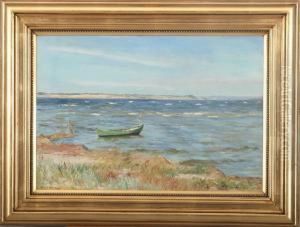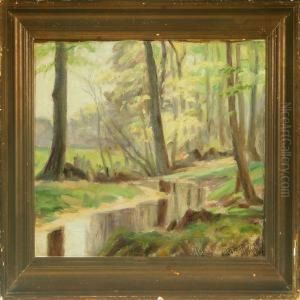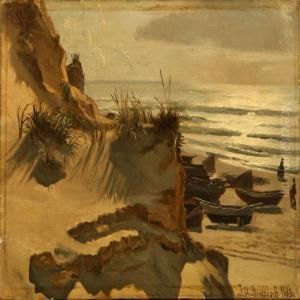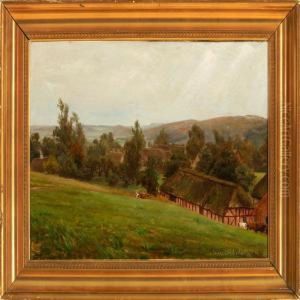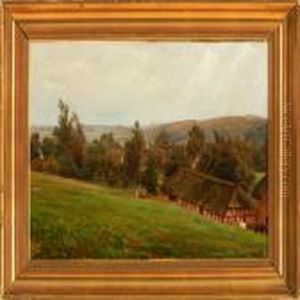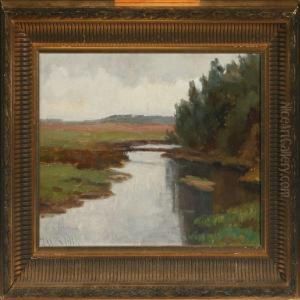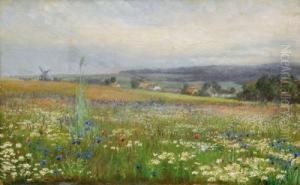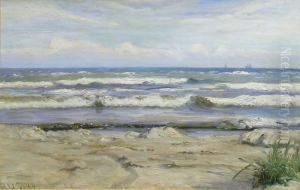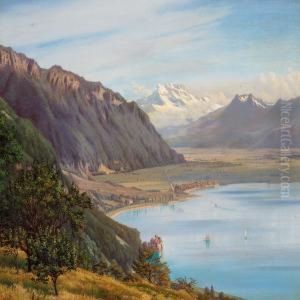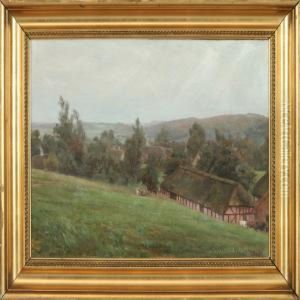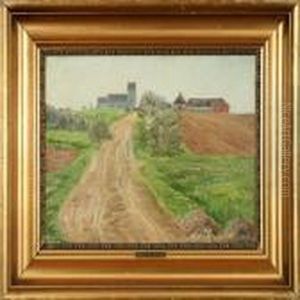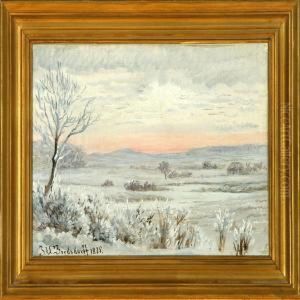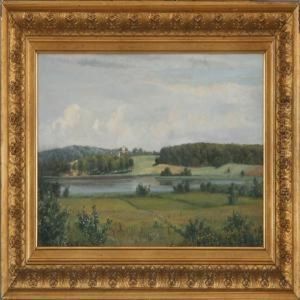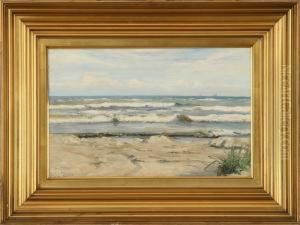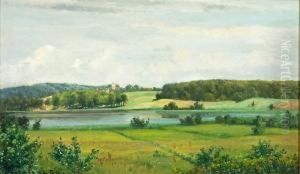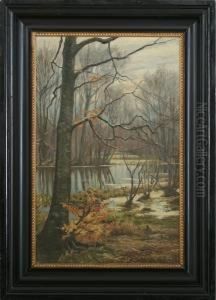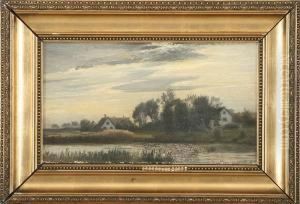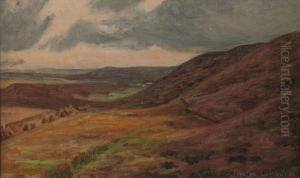Johan Ulrik Bredsdorff Paintings
Johan Ulrik Bredsdorff was a Danish artist, primarily known for his work as a painter and illustrator. Born on November 1, 1845, in Copenhagen, Denmark, he became a prominent figure in the Danish art scene during the late 19th and early 20th centuries. Bredsdorff studied at the Royal Danish Academy of Fine Arts where he honed his skills and immersed himself in the artistic movements of the time. His early work was influenced by the Danish Golden Age, a period characterized by a focus on realism and national romanticism.
During his career, Bredsdorff experimented with various styles and techniques, which included landscape painting, portraiture, and book illustrations. He was particularly admired for his ability to capture the serene beauty of the Danish countryside and the everyday lives of its people. His illustrations were often featured in books and periodicals, contributing to the popular visual culture of the era.
Apart from his artistic work, Bredsdorff also engaged in teaching, passing on his knowledge and skills to a new generation of artists. His legacy is not only preserved in his artworks but also in the influence he had on his students. Despite not being widely recognized internationally, his contributions to Danish art have been appreciated by art historians and collectors in his home country.
Bredsdorff lived through a transformative period in European art, witnessing the transition from traditional academic styles to more modern and experimental forms of expression. However, he remained largely dedicated to the classical principles of art, emphasizing clarity, harmony, and detailed craftsmanship in his work.
Johan Ulrik Bredsdorff passed away on September 30, 1933, leaving behind a body of work that reflects the cultural and artistic values of his time. Today, his paintings and illustrations can be found in museums, galleries, and private collections, serving as a testament to his skill and dedication to the arts.
